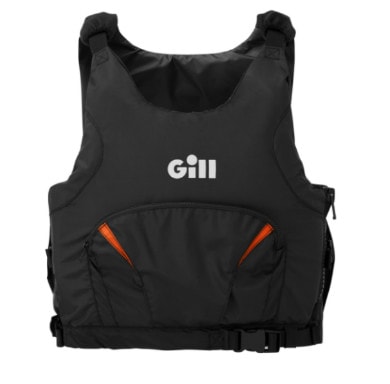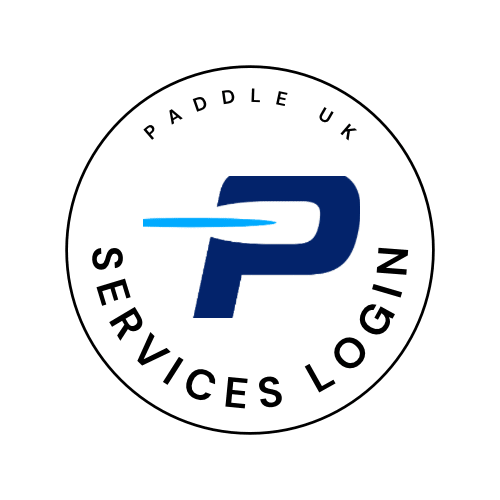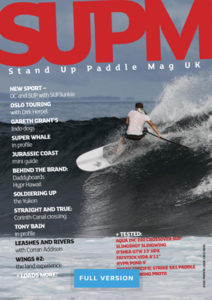It’s a question we get asked all the time – should I wear a buoyancy aid when stand up paddle boarding? And the answer is, probably yes, BUT, read the below guidance first to choose which one will be most suitable for the type of paddling you do.
Recently, Paddle UK, the National Governing Body for paddle sport updated their guidance on this very question. There are a few reasons why this guidance has been updated. Firstly, the surge in stand up paddle boarding has meant a need to keep people safe on the water and protect against unnecessary incidents. But also as technology evolves and more information and products come onto the market, guidance is updated to reflect the current situation of the sport. For this reason, the guidance around wearing a buoyancy aid when stand up paddle boarding has been updated.
So what’s the update? Paddle UK strongly recommends that you have a primary form of floatation, which is normally your board via a leash AND a secondary form of floatation in the form of a buoyancy aid (BA) or personal floatation device (PFD). No matter which type of PFD you use, make sure it has the ISO 12402-5 or ISO 12402-6 certification. This means it passes all the necessary tests to be an effective and safe PFD.
Remember as well, it’s not just about wearing a leash as a primary source. You also need to make sure you’re wearing the correct leash for the environment you paddle. You can check which leash you need to be wearing here.
Ok so, onto the options…
Option 1 for moving/flowing water environments
“Hard foam” Buoyancy Aids and Personal Flotation Devices
 This type of buoyancy aid (BA) or personal flotation device (PFD) should be used on moving/flowing water including tidal rivers and estuaries, tidal races, white water rivers, open coastal and downwind environments. For grade 2 (and above) white water rivers and fast flowing challenging water, this type of buoyancy aid is considered to be your primary source of floatation. These BA’s/PFD’s are designed for ease of movement when paddling and immediately assist your buoyancy when you are in the water.
This type of buoyancy aid (BA) or personal flotation device (PFD) should be used on moving/flowing water including tidal rivers and estuaries, tidal races, white water rivers, open coastal and downwind environments. For grade 2 (and above) white water rivers and fast flowing challenging water, this type of buoyancy aid is considered to be your primary source of floatation. These BA’s/PFD’s are designed for ease of movement when paddling and immediately assist your buoyancy when you are in the water.
There’s a few things to check when choosing the right BA or PFD for you, so make sure:
- The size and fit is right for you. BA’s and PFD’s come in various sizes depending on your chest size and weight, so it’s important to get the right fit for you.
- The BA/PFD carries an ISO 12402 certification – this should be clearly stated on sale. If you’re not sure, just ask.
- Your BA is maintained by following the manufacturers guidelines. Really important. Make sure you look after your BA how it should be looked after. Check it’s in good condition before you wear it on every occasion, and get it fixed or replaced if it’s not. It’s not a risk worth taking.
If you’re not sure what these buoyancy aids look like, or need to purchase one for your paddling, click here.
*Member of Paddle UK? Don’t forget your 15% Gill discount across the range!
Option 2 for flat, calm waters such as lakes, canals, sea / coastal bays and slow moving deepwater rivers
Waist belt/inflating PFD’s
 If you aren’t paddling on white water rivers or moving/flowing water, a waist belt or inflating PFD can be used. Waist belt PFD’s have become more popular recently with the influx of SUP paddlers. Although these are popular, do be aware that these PFD’s do not give immediate support and need to be manually deployed once in the water. If you’re going to be using one of these PFD’s, make sure you are familiar with how it is deployed and practice this in a controlled environment. To find out how to wear and inflate a waist belt when stand up paddle boarding, click here.
If you aren’t paddling on white water rivers or moving/flowing water, a waist belt or inflating PFD can be used. Waist belt PFD’s have become more popular recently with the influx of SUP paddlers. Although these are popular, do be aware that these PFD’s do not give immediate support and need to be manually deployed once in the water. If you’re going to be using one of these PFD’s, make sure you are familiar with how it is deployed and practice this in a controlled environment. To find out how to wear and inflate a waist belt when stand up paddle boarding, click here.
Again, same as with option 1, make sure they are:
- Fitted well around the waist BEFORE you paddle. They should be fitted securely and snuggly incase you have to inflate.
- The waist belt/PFD carries an ISO 12402 certification – this should be clearly stated on sale. If you’re not sure, just ask.
- Your waist belt/PDF is maintained by following the manufacturers guidelines. Make sure you look after your waist belt/PFD how it should be looked after. Check it’s in good condition before you wear it on every occasion, and get it fixed or replaced if it’s not. These PFD’s should be tested annually and serviced in accordance with manufacturer’s instructions.
Not sure what a waist belt/inflating PFD looks like? Click here.
So there you have it. Should I be wearing a buoyancy aid when stand up paddle boarding? Probably! Check the guidance, wear your leash correctly, and enjoy paddling by being prepared.


 Go Paddling
Go Paddling Clear Access Clear Waters
Clear Access Clear Waters Paddles Up Training
Paddles Up Training Clubhouse
Clubhouse Services Login
Services Login

